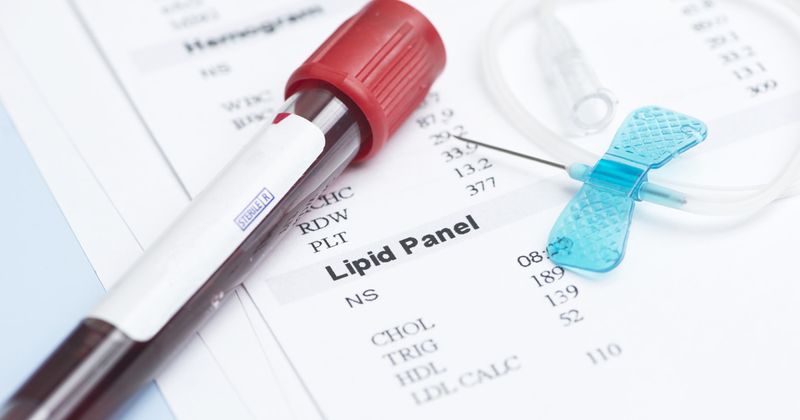Remnant cholesterol, triglyceride levels may predict major CV events
In a new study, levels of triglycerides and remnant cholesterol — but not LDL or HDL — were associated with major CVD outcomes, independent of lifestyle and other risk factors, in older adults with high CV risk and overweight or obesity.
Remnant cholesterol “should be considered a preferential treatment target in this population,” Olga Castañer, MD, PhD, of the Cardiovascular Risk and Nutrition Research Group at the Hospital del Mar Medical Research Institute in Barcelona, Spain, and colleagues wrote in the Journal of the American College of Cardiology.

Researchers analyzed the PREDIMED cohort to assess baseline lipid profiles and major adverse CV events, defined as MI, stroke or CV death, over a median follow-up of 4.8 years. The PREDIMED cohort is a high-risk primary prevention cohort (mean age, 67 years; mean BMI, 30 kg/m2; 43% men; 48% with diabetes).
“Triglycerides, but not cholesterol, can be easily metabolized in most cells. Therefore, it has been hypothesized that cholesterol, not triglycerides, is the harmful component in triglyceride-rich lipoproteins,” Castañer and colleagues wrote. “Triglyceride-rich lipoproteins and the remnant cholesterol carried in these particles have the capacity to cross the arterial wall and are taken up by macrophages and smooth muscle cells. Because human cells can generally degrade triglycerides but not cholesterol, accumulation in the arterial wall of the remnant-C may play a causal role in atherosclerosis development, similar to LDL-C.”
Lipid profiles and CV risk
Risk for MACE was 4% higher per every 10 mg/dL increase in serum concentrations of triglycerides (HR = 1.04; 95% CI, 1.02-1.06; P < .001), 5% higher per every 10 mg/dL increase in serum concentrations of non-HDL cholesterol (HR = 1.05; 95% CI, 1.01-1.1; P = .026) and 21% higher per every 10 mg/dL increase in serum concentrations of remnant cholesterol (HR = 1.21; 95% CI, 1.03-1.33; P < .001) in multivariable-adjusted analyses.
Levels of HDL (HR = 0.97; 95% CI, 0.91-1.04; P = .427) and LDL (HR = 1.01; 95% CI, 0.97-1.07; P = .583) were not associated with MACE in this cohort.
The researchers reported a 44% higher risk for MACE associated with lipid alternations characteristic of atherogenic dyslipidemia, which included triglycerides greater than 150 mg/dL and HDL < 40 mg/dL in men or < 50 mg/dL in women (HR = 1.44; 95% CI, 1.04-2; P = .03).
“The increased risk of major adverse CV events associated with remnant-C could be attributed to previously described mechanisms related not only to atherosclerotic plaque formation but also to local inflammation,” the researchers wrote. “High levels of remnant-C in serum would contribute to an increased penetration into the arterial wall, where remnant-C is more easily trapped and taken up by macrophages than LDL, which leads to a faster formation of foam cells.”
Findings in context
John R. Burnett, MD, PhD, of the department of clinical biochemistry at PathWest Laboratory Medicine in the Royal Perth Hospital and Fiona Stanley Hospital Network in Perth, Western Australia, and colleagues discussed the findings in a related editorial published in JACC.
“Should we now shelve LDL cholesterol and embrace VLDL and remnant cholesterol as the new oracles of atherosclerotic CVD risk? Not so fast. It would be premature to discard LDL cholesterol based on PREDIMED, which was a 4.8-year study with only 263 total major adverse CV events. This is insufficient to offset the mountain of literally hundreds of studies and independent types of experiments that uphold the value of LDL cholesterol in prediction and intervention of ASCVD.
“If these results can be replicated, they represent a potential advance for diagnosis and prevention of ASCVD endpoints. One could envision a future where in addition to the routine lipid profile, newer analytes such as remnant cholesterol as well as lipoprotein(a) and apolipoprotein B are reported to improve prognostication and help guide preventive treatments,” Burnett and colleagues wrote.
Castañer and colleagues concluded in their study that randomized controlled trials that include hard CVD outcomes are needed to compare interventions that target lowering remnant cholesterol vs. standard cholesterol-lower therapy, including when LDL target levels have been achieved.
